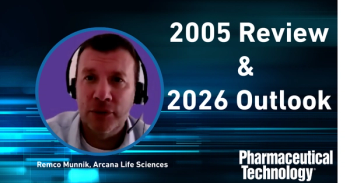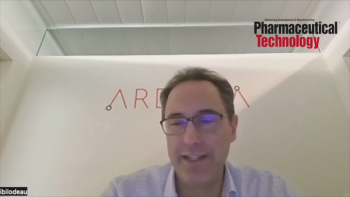
- Quality and Regulations eBook
- Volume 49
- Pages: 16–19
Continued Process Verification Is Critical in Pharmaceutical Manufacturing
Key Takeaways
- Pharmaceutical manufacturing requires defining quality target product profiles and critical quality attributes (CQAs) to ensure desired product quality.
- Process development identifies critical process parameters (CPPs) that influence CQAs, ensuring robust manufacturing processes.
Continued process verification ensures pharmaceutical manufacturing stays in control through data analysis, trend detection, and lifecycle monitoring.
A production process is only as good as its development. Although this statement may seem cliché, it is particularly significant for the manufacture of pharmaceuticals, especially sterile injectables.
At the beginning of the product development, the application area of the new drug or combination product, and the resulting requirements for the medication, are defined. This quality target product profile includes such aspects as dosage form, concentration or required dose, physical properties or requirements for the closure system, and stability.
Once these aspects are clarified, the necessary quality attributes for the new product need to be derived. Known as critical quality attributes (CQA), these include all physical, chemical, or (micro-)biological properties that ensure the desired product quality. Specifications of these parameters must be strictly adhered to, which is achieved through appropriate manufacturing processes.
This is where process development comes into play, with the task of determining which process parameters are necessary to maintain the desired CQAs within their specified range. The process must be robustly developed, meaning that small variations during production in raw materials, packaging materials, or other parameters still lead to the desired outcome. These parameters are also known as critical process parameters (CPPs), which directly influence the CQAs of the product.
One might argue that after process development, only process validation remains, when it is demonstrated, for example through three batches, that the process leads to the desired outcome. If the process validation with the established parameters is successfully completed, the process is approved for commercial production, and the produced batches are controlled through appropriate release parameters. But this is only one-half of the truth.
Both United States and European regulations require that process validation consist of three phases: the mentioned phases of process development and process validation (process performance qualification) and the third phase of continued process verification (CPV, US) or ongoing process verification (OPV, European Union).
FDA guidance
The FDA Guidance for Industry from 2011 describes this as follows (1): “The goal of the third validation stage is continual assurance that the process remains in a state of control, also known as the validated state, during commercial manufacture.
“Continued process verification must allow detection of undesired process variability to enable manufacturers to spot any potential problems with the aim to correct or improve the production process. In an effort to maintain quality standards and keep the process in a state of control, CPV must effectively collect and analyze product and process data. This data should be analyzed statistically by relevant personnel and outcomes must point to an appropriate control strategy.”
EU guidance
Formulations in Annex 15 of the EU good manufacturing practice (GMP) guideline (2) read similarly and outline that manufacturers are responsible for monitoring product quality to support a continued state of control over the course of the product’s full lifecycle. Similarly, the process verification itself must be reviewed and modified as needed based on its performance. Above all, OPV must operate based on a pre-approved protocol with adequate documentation to enable a full understanding of its effectiveness and consistency.
Behind these terms lies the expectation that processes are regularly monitored and evaluated throughout their lifecycle. How this should be done is clearly specified. Whenever possible and sensible, statistical methods should be used to evaluate the process parameters relevant for the product’s manufacturing process. This evaluation aims to detect negative process developments or trends early, before severe deviations occur in the manufacturing or filling and CQAs are no longer met. Which parameters need to be monitored again results from process development—namely the CPPs, as they determine or influence the later product quality. To evaluate the data, several prerequisites are necessary:
- knowledge of the CPPs
- an appropriate control strategy for these CPPs and corresponding data collection
- an appropriate statistical method for detecting and evaluating trends
- process and product knowledge.
Read the article in the
About the author
Philip Hoersch is Director, Quality Assurance, Process Performance & System Compliance, Vetter.
Article details
BioPharm International®/Pharmaceutical Technology®/Pharmaceutical Technology® Europe
August 2025
Pages: 16–19
Citation
When referring to this article, please cite it as Hoersch, P. Continued Process Verification Is Critical in Pharmaceutical Manufacturing. BioPharm International®/Pharmaceutical Technology®/Pharmaceutical Technology® Europe
Articles in this issue
Newsletter
Get the essential updates shaping the future of pharma manufacturing and compliance—subscribe today to Pharmaceutical Technology and never miss a breakthrough.




